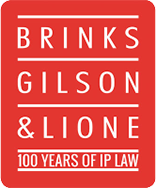On March 27, 2018, the Federal Circuit reversed the district court’s finding of fair use in the long-running copyright dispute between Oracle and Google. Oracle America, Inc. v. Google, Inc., No. 2017-1118 (Fed. Cir., March 27, 2018), slip op. This is the second time that the case had been tried to a jury, and the second time that the case had been up to the Federal Circuit on appeal.
In order to understand the fair use issue, it is necessary to outline some of the facts. The underlying dispute involves Google’s inclusion of 37 of the 166 Java Application Programming Interfaces (API) in the Android operating system for smartphones and other devices. Java is a programming language originally developed by Oracle’s predecessor for desktop computers that permits applications to run on any computer platform. The Java APIs are a collection of declarations of pre-written Java source code programs that allow Java programmers to use prewritten code to build certain functions into their own programs rather than write code to perform those functions from scratch. Id at 8.
In the first appeal, the lower court affirmed a jury verdict that Google’s incorporation of 37 Java APIs into Android infringed Oracle's copyright. The district court, however, found that the APIs were not copyrightable. The Federal Circuit reversed, and held that the structure, sequence, and organization (SSO) of the Java APIs are entitled to copyright protection. Id. at 6. Google’s petition for a writ of certiorari from the first appeal was denied, Id. at 6-7, but the case was remanded on the question of whether Google’s use of a subset of the Java APIs was a fair use.
On remand, the district court submitted the question of fair use to the jury, and the jury found that Google’s use of the subset of the Java APIs was fair use. On appeal, the Federal Circuit reversed – finding no fair use.
The fair use doctrine began as a judge-made limitation on copyright, which was codified in the 1976 Copyright Act. 17 U.S.C. § 107. Id. at 16. Section 107 requires courts to consider four factors in assessing a fair use defense: “(1) ‘the purpose and character of the use, including whether such use is of a commercial nature or is for nonprofit educational purposes;’ (2) ‘the nature of the copyrighted work;’ (3) ‘the amount and substantiality of the portion used in relation to the copyrighted work as a whole;’ and (4) ‘the effect of the use upon the potential market for or value of the copyrighted work.’” Id., citing 17 U.S.C. § 107.
The Court assessed the fair use issue under Supreme Court and Ninth Circuit precedent, including the appropriate standard of review and with reference to the four factors. Id. at 17-21. In the context of a jury trial, the Court observed that the Ninth Circuit had clarified that the jury’s role is limited to “determining disputed ‘historical facts,’ not the inferences or conclusions to be drawn from those facts.” Id. at 24. In this case, the fair use issue had gone to the jury in toto, without a special verdict form requiring the jury to make specific fact findings. Thus, the Federal Circuit was required to assess the subsidiary and controverted findings of historical fact for substantial evidence, but to review inferences based on those findings de novo. Id. at 25-26.
Applying this standard, the Court held that Google’s copying of the Java APIs did not constitute fair use. As to the first fair use factor, commercial use, it found that Google’s use was commercial in nature, in spite of the fact that Google makes Android available free of charge. “[A]lthough Google maintains that its revenue flows from advertisements, not from Android, commerciality does not depend on how Google earns its money.” Id. at 30. The Court also found that Google’s use of the APIs was not “transformative” as a matter of law because the use of the copied declarations serves the same function in Android as in Java, rejecting Google’s argument that moving the APIs to a new context (smartphones as opposed to computers) was sufficient to be transformative. Id. at 30-37. Although the Court credited the jury’s implicit finding that Google did not act in bad faith, it held that the commercial use factor weighed against Google.
With respect to the second fair use factor, the nature of the copyrighted work, the Court found that reasonable jurors could have concluded that the functional nature of the APIs is substantial and important, and thus concluded that the second factor favored a finding of fair use in favor of Google. Id. at 44.
The Court next considered the third factor, the amount and substantiality of the portion used.Id. at 44-48. Under Ninth Circuit law, the third factor “looks to the quantitative amount and qualitative value of the original work used in relation to the justification for its use.” Id. at 45. The parties stipulated that only 170 lines of code were necessary to write in the Java language. Id. at 46. On the other hand, Google copied 11,500 lines of code. Id. The Court found that “no reasonable jury could conclude that what was copied was qualitatively insignificant” in view of Google’s concession of “the importance of the APIs to the developers it wished to attract.” Id. at 47. Thus the Court determined that the third factor was “at best, neutral . . . and arguably weighs against” a finding of fair use. Id. at 48.
The Court then considered the fourth factor, the effect on the potential market, which includes “harm to the ‘market for potential derivative uses.’” Id. at 50. The Court agreed with Oracle that “evidence of actual and potential harm stemming from Google’s copying was ‘overwhelming’.” Id. at 52. It noted that Java SE had been in use for years in mobile devices prior to the release of Android, but that afterwards Android was used as a substitute or that the presence of Android was used by licensees to negotiate a steep discount. Id. at 51-52. Moreover, even though Oracle had not developed a smartphone platform, that fact is irrelevant, because “a market is a potential market even where the copyright owner has no immediate plans to enter it or is unsuccessful in doing so.” Id. at 53. Thus, the Court found that the fourth factor “weighs heavily in favor of Oracle.” Id.
Considering the four factors together, the Court found that Google’s copying was not a fair use as a matter of law. “Although Google could have furthered copyright’s goals of promoting creative expression and innovation by developing its own APIs, or by licensing Oracle’s APIs for use in developing a new platform, it chose to copy Oracle’s creative efforts instead. There is nothing fair about taking a copyrighted work verbatim and using it for the same purpose and function as the original in a competing platform.” Id. at 54.
Although the Court found that Google’s copying under the circumstances presented in this case did not amount to a fair use, it noted, “We do not conclude that a fair use defense could never be sustained in an action involving the copying of computer code.” Id. at 54. It noted that in prior cases, the Ninth Circuit had sustained fair use findings in such cases. Id.
One noteworthy takeaway from this decision is the issue of whether a fair use defense should go to the jury. Although the fair use defense went to the jury in this case, the Court was careful to state that “the Supreme Court has never clarified whether and to what extent the jury is to play a role in the fair use analysis.” Id. at 23. And it pointed out that “several courts—including the Ninth Circuit—have continued to accept the fact that the question of fair use may go to a jury, without analysis of why it may.” Id. It further noted that the “Ninth Circuit has clarified, however, that the jury role in this context is limited to determining disputed ‘historical facts,’ not the inferences or conclusions to be drawn from those facts.” Id.at 24. The Court clarified that “we might assess the jury’s role in the assessment of fair use differently if not bound by Ninth Circuit law.” Id. at 26. The Court’s discussion of the role of the jury suggests that litigants should look to the law of the Circuit in which their case is pending to determine the role of a jury in assessing a fair use defense, and whether a special verdict form should be used to permit the jury to articulate its fact findings. See id. at 25.





 />i
/>i
